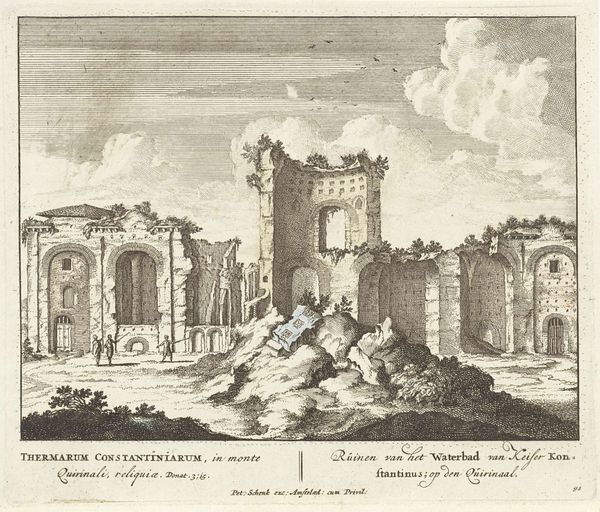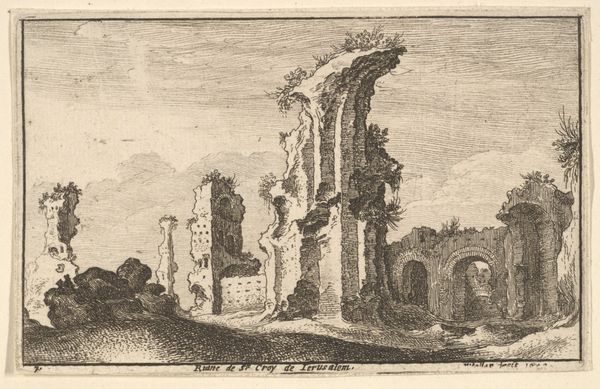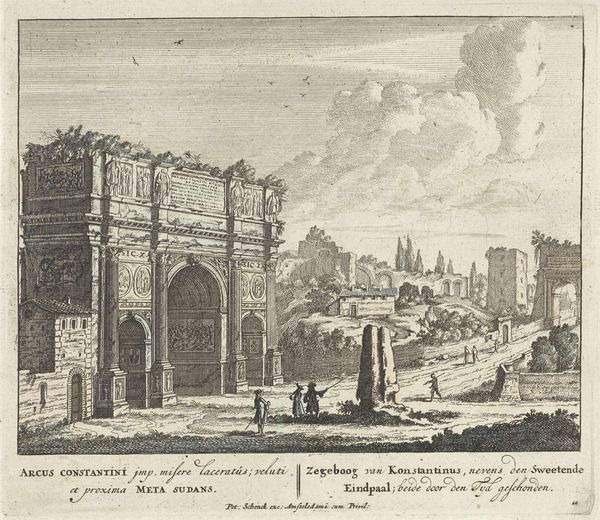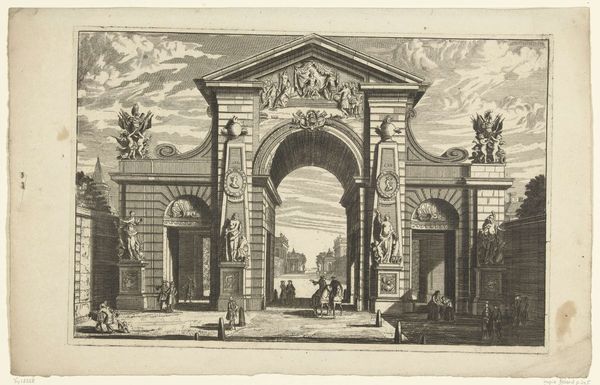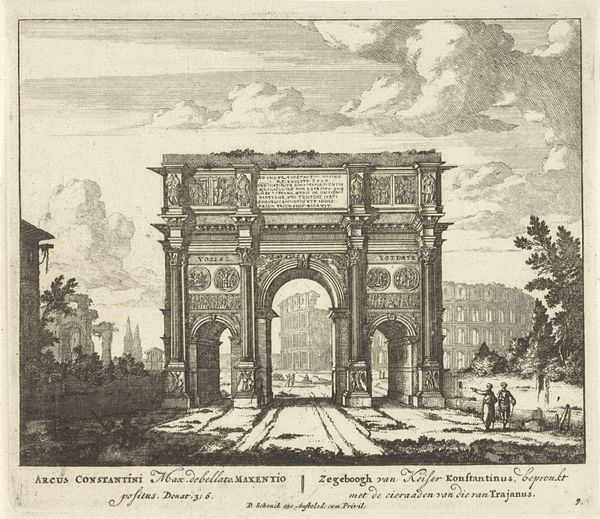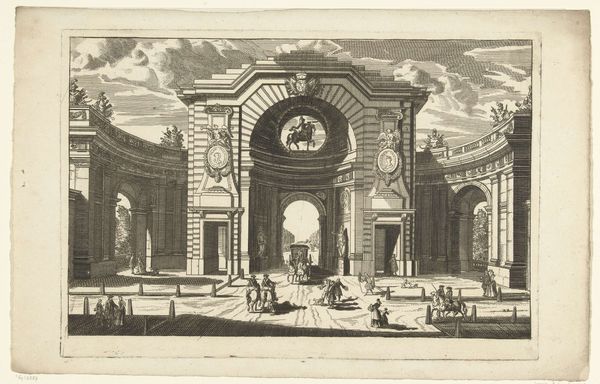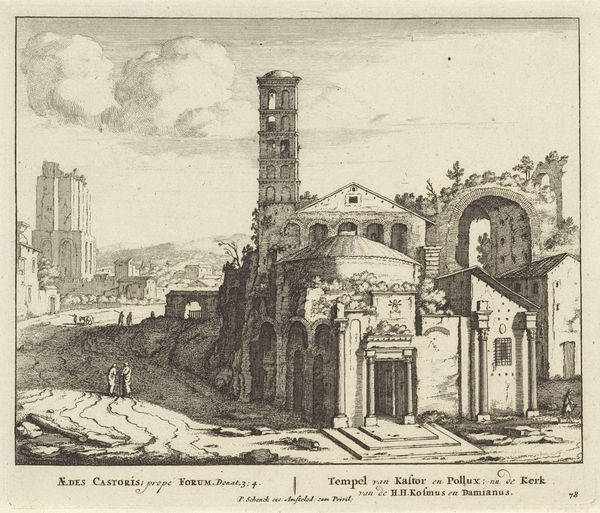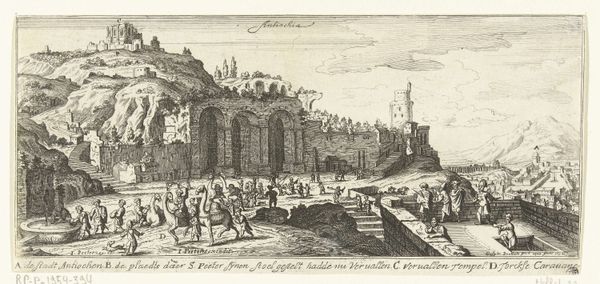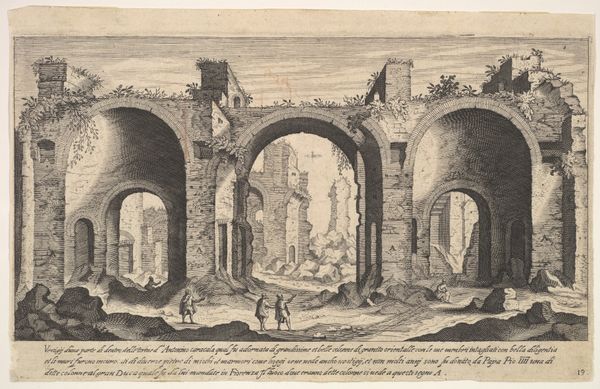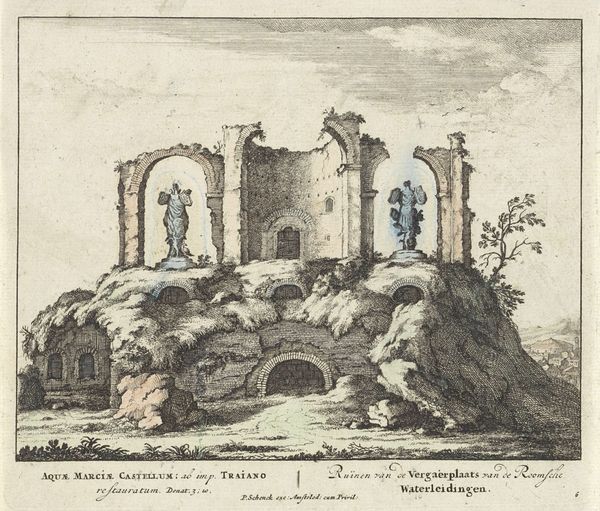
print, engraving, architecture
#
baroque
# print
#
old engraving style
#
landscape
#
cityscape
#
history-painting
#
engraving
#
architecture
Dimensions: height mm, width mm
Copyright: Rijks Museum: Open Domain
Editor: So, here we have Pieter Schenk’s "Thermen van Caracalla," an engraving dating from around 1675 to 1711. The decaying architecture definitely gives it a melancholic feeling. What do you make of it? Curator: The print presents us with the ruins, but ruins as a social and political statement, rather than just aesthetic objects. What power dynamics do you think are at play in depicting such a famous Roman bathhouse in this state of decay? Editor: That's an interesting question! It suggests maybe a decline in power, or perhaps even a critique of past empires? Curator: Exactly. The depiction of ruins was highly fashionable and politically charged in the 17th and 18th centuries. Consider, how were the remains of Roman power seen in relation to the emerging empires of the Dutch and English? Were they warnings, or validations? Editor: So, it’s not just a pretty picture, but a statement on power and historical legacy. The way Schenk presents this cityscape really underscores that. Curator: Precisely. This work highlights the importance of the print market and how it was used to promote not only knowledge, but also ways of interpreting the past. Editor: I had never thought about looking at prints like this. Now I see that the ruins aren't just a background; they're front and center, carrying meaning and promoting public debate. Curator: Right! Art is never created in a vacuum. Analyzing its socio-political environment makes us think critically about not only art, but also the world we inhabit.
Comments
No comments
Be the first to comment and join the conversation on the ultimate creative platform.

